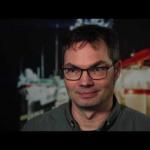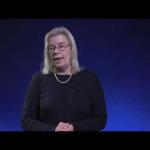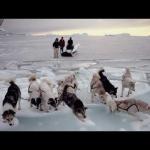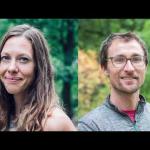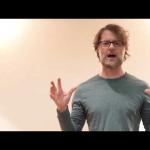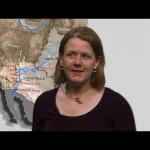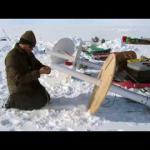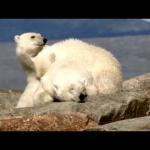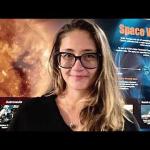Earth Science Stories
This video is part of a collection - “Frozen in the Ice: Exploring the Arctic." Check out the MOSAiC page for more details.
In this specific lesson, Dr. Melinda Webster explains sea ice formation. You'll learn about its role in driving ocean circulation, different shapes the ice can take on, and what affects sea ice growth vs. reduction.
Science Content Video
This video is part of a collection - “Frozen in the Ice: Exploring the Arctic." Check out the MOSAiC page for more details.
In this specific lesson, Dr. Hauke Flores describes sea ice as an important driver in Arctic food webs. You'll learn about the serious threats climate change poses to biodiversity and key species dependent on ice cover.
Science Content Video
This video is part of a collection - “Frozen in the Ice: Exploring the Arctic." Check out the MOSAiC page for more details.
In this specific lesson, Dr. Clara Hoppe sheds light on the small but mighty phytoplankton! You'll learn about MOSAiC's special interest in primary production, carbon export, and groundbreaking data scientists expect to glean from the expedition.
Science Content Video
This video is part of a collection - “Frozen in the Ice: Exploring the Arctic." Check out the MOSAiC page for more details.
In this specific lesson, Dr. Gunilla Svensson explains how important Earth system models are to understanding where both global and Arctic climate systems are headed. You'll also learn about the key role MOSAiC's modeling team plays in the expedition.
Science Content Video
This video is part of a collection - “Frozen in the Ice: Exploring the Arctic." Check out the MOSAiC page for more details.
In this specific lesson, Dr. John Walsh discusses how climate change is apparent throughout the Arctic (air, land, ice, and ocean) and that these changes are already impacting humans, wildlife, and the environment.
Science Content Video
This video is part of a collection - “Frozen in the Ice: Exploring the Arctic." Check out the MOSAiC page for more details.
In this specific lesson, Dr. James Overland discusses how sea ice loss can cause major changes in the Arctic climate — and more specifically, in the polar jet stream.
Science Content Video
This video is part of a collection - “Frozen in the Ice: Exploring the Arctic." Check out the MOSAiC page for more details.
In this video, Drs. Anne Gold and Matthew Shupe conclude the series "Frozen in the Ice: Exploring the Arctic" with a summary of the course's major lessons.
Science Content Video
This video is part of a collection - “Frozen in the Ice: Exploring the Arctic." Check out the MOSAiC page for more details.
In this specific lesson, Dr. Matthew Shupe explains the significance of clouds in the Arctic system and how they play important roles in precipitation, energy transfer, and climate modeling.
Science Content Video
CIRES' Anne Gold delivers a lecture on the physical geographic overview of the Colorado River Basin and the legal and political aspects of water management in the west. This is part of the Water in the Western US lecture series.
Science Content Video
This peer-reviewed educational video describes sea ice and land ice processes that are unique to polar regions.
Science Content Video
This peer-reviewed educational video introduces feedbacks that are important in the Arctic climate system.
Science Content Video
Join Dr Rick Saltus to learn about citizen science with CrowdMag. Everyone is invited to use your smartphone to measure magnetic fields around you and send your data to scientists.
Science Content Video
CIRES scientist Dr. Alessandra Pacini explains what space weather is, how it affects us here on Earth.
Science Content Video

